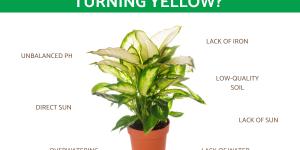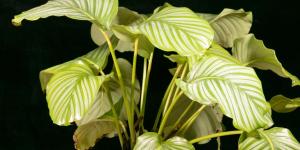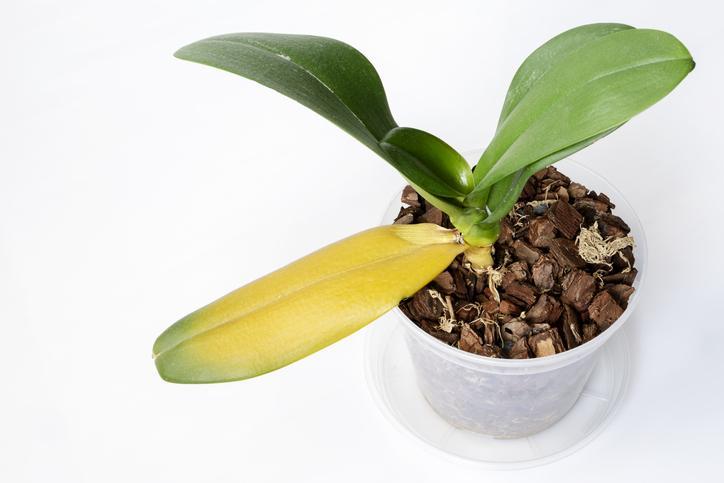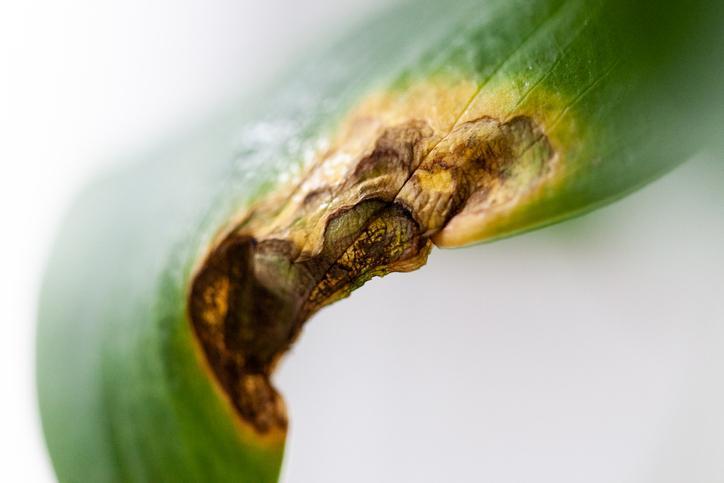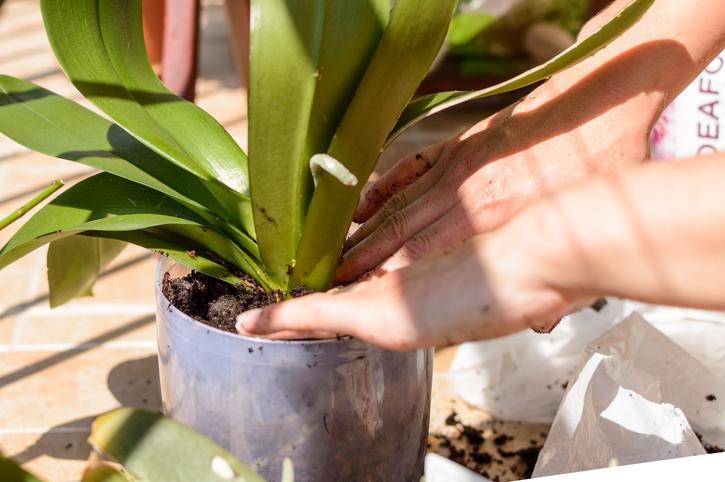Why Are Your Orchid’s Leaves Turning Yellow?


Orchids often get a reputation for being fussy, but they're not necessarily any harder to care for than other houseplants. Like any plant, they can experience problems, and yellowing leaves are a common sign something's amiss.
This article by thedailyECO answers your questions about yellowing orchid leaves, including why it happens, what it means, and what you can do. We'll explore the various causes and provide detailed solutions for each. Beyond just treating the problem, we'll also share tips on how to improve your orchid's overall health and even revive a struggling plant.
Improper light exposure
If your orchid's leaves are turning yellow, improper light exposure is often the culprit.
Orchids thrive in indirect sunlight, whether placed indoors or in the garden. While these tropical plants need bright light, direct sun exposure raises temperatures excessively, causing yellowed leaves and darkened flowers.
To address sun damage, carefully trim the yellowed portions using proper tools. Since orchids store water and nutrients in their leaves, only remove damaged sections while preserving healthy tissue. This targeted pruning helps your orchid recover while maintaining its ability to sustain growth.
Want to expand your indoor garden? Learn which plants make perfect companions for your orchids.
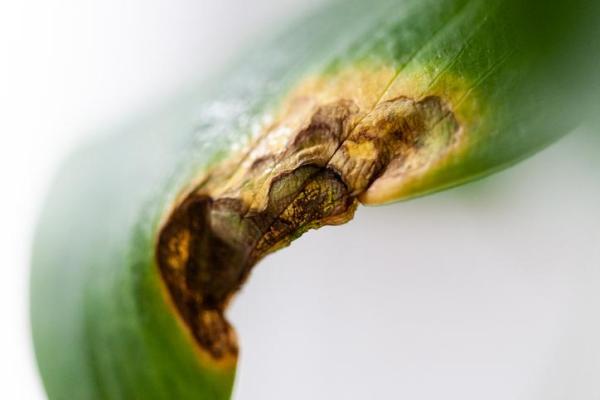
Watering problems
Yellow orchid leaves often signal watering problems, with overwatering being the most common issue. Look for black spots and limp leaves as telltale signs. Despite orchids thriving in humidity, excess water damages them. Use a diffuser for watering leaves and roots, and ensure proper pot drainage.
If your orchid shows signs of underwatering particularly visible in Phalaenopsis varieties through whitish roots, water by immersion and allow natural drainage.
Also avoid using hard water and, instead, opt for mineral water to prevent harmful salt buildup in the substrate that can damage your plant's health.
Improper use of fertilizer
Yellow, wrinkled leaves can result from fertilizer misuse. Using too much or the wrong type can damage your plant. Stick to orchid-specific fertilizers and follow the directions carefully - think of it like making coffee, you wouldn't want it too strong or too weak.
Time your fertilizing right, wait until your orchid is actively growing and feed it after watering. Avoid fertilizing newly transplanted orchids.
Keep in mind that too little fertilizer can cause yellowing too, especially if your orchid's running low on potassium. The potting mix can get depleted over time, so regular feeding during growing season keeps your orchid happy and healthy. Wondering if it's time to give your orchid a new home? Get expert tips on successful repotting.

Diseases
If you notice yellow spots on your orchid's leaves, you may be dealing with a disease. Quick identification and isolation are crucial to prevent spread to other plants in your collection. Let's look at the different cases:
Fungal infections:
Fungal infections develop when orchids experience poor air circulation and excessive humidity. Look for distinctive yellow spots with black centers on the leaves.
Treatment requires two steps: first, improve ventilation and reduce humidity levels in the growing area. Then apply a systemic fungicide according to package instructions to eliminate the infection.
Bacterial infections:
Bacterial infections manifest differently. Watch for yellowish spots that ooze an oily substance and gradually darken. These infections often stem from poor watering practices. Improve drainage and air flow, then carefully remove infected areas using sterilized cutting tools to prevent further spread.
Viral infections:
Viral infections pose the greatest threat to orchids. Unlike fungal or bacterial problems, viruses typically prove fatal and there is no effective treatment.
Even if an orchid survives, it will remain permanently weakened and unable to produce flowers. While optimizing growing conditions may help support the plant, prevention through proper sanitation and isolation of infected plants remains the best defense.
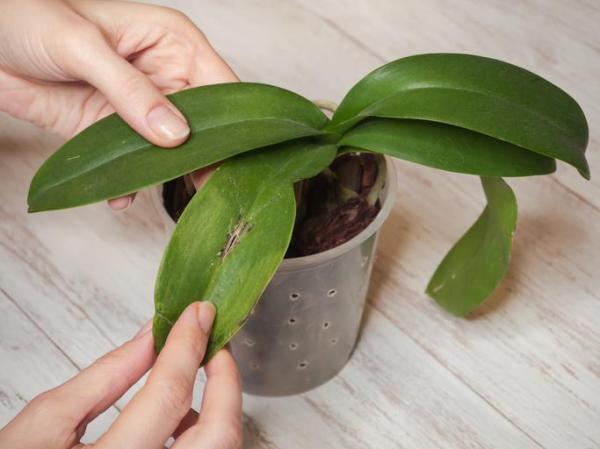
Old leaves
Just like humans, orchids go through natural aging. When older leaves yellow and fall despite good care, it's often part of their normal lifecycle rather than a problem.
The key is the pattern: yellowing starts with bottom leaves and progresses evenly, without spots or abnormal textures. Meanwhile, the rest of the plant stays healthy and vibrant. This leaf shedding actually benefits the orchid, creating space for fresh growth.
To distinguish natural aging from disease or care issues, check if the yellowing is isolated to older, lower leaves and if the overall plant maintains its vigor.
If newer leaves and other parts remain healthy, your orchid is likely just going through its natural renewal process.
Want to see what makes certain orchids worth thousands of dollars? Explore the world's most unique and coveted varieties.
How to save an orchid with yellow leaves?
After identifying yellow leaves in your orchid, follow these essential care guidelines for a healthy plant:
- Provide bright, indirect sunlight throughout the day and use orchid-specific fertilizer.
- Remove only yellowed portions of leaves, maintaining healthy tissue.
- Water based on root color, allowing natural drainage.
- For diseases, isolate affected plants and improve growing conditions or apply appropriate treatments.
If your orchid shows signs of decline, don't panic. Yellowing leaves often signal adjustable care issues rather than permanent damage. Assess light, water, and fertilizer needs, then adjust accordingly. With proper attention and care, most orchids recover well.
Want to keep your orchids healthy and thriving? Our detailed guide on orchid health will help you prevent and manage common problems.
If you want to read similar articles to Why Are Your Orchid’s Leaves Turning Yellow?, we recommend you visit our Plant care and cultivation category.


